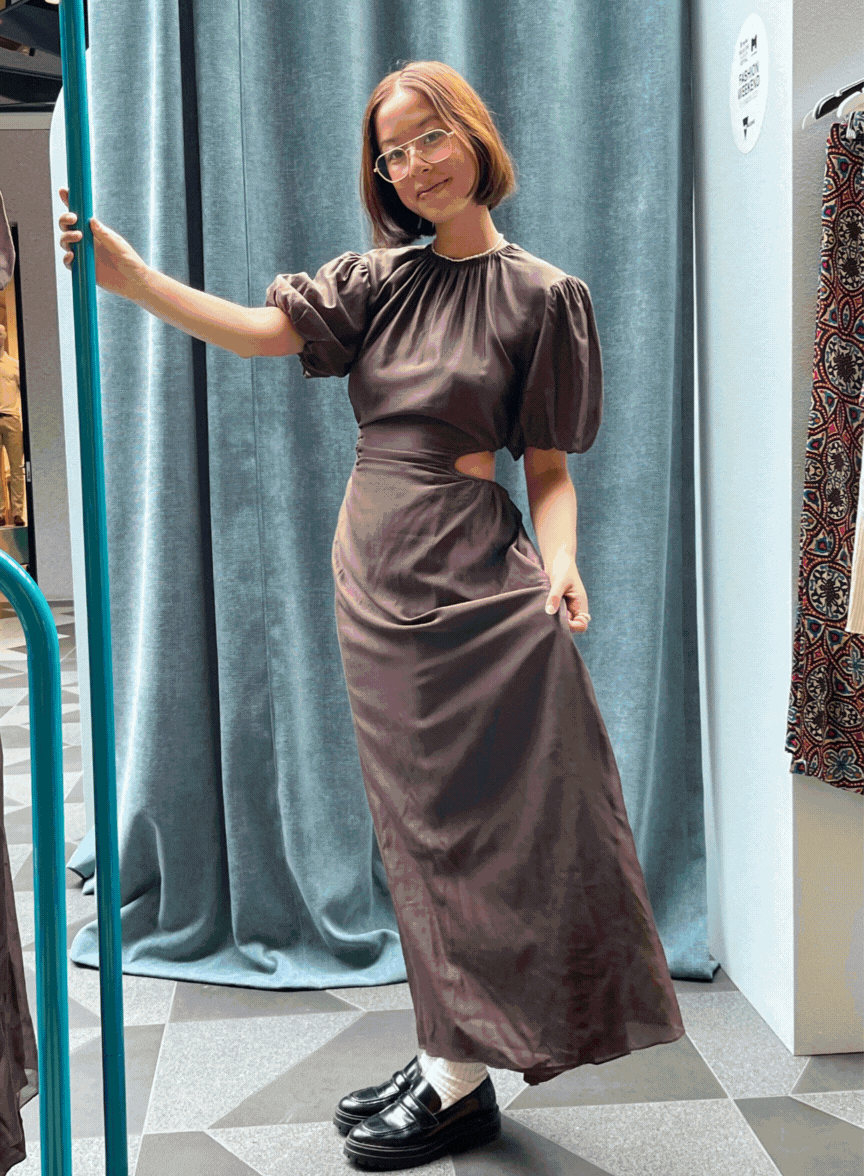-

- Trading hours
- Contact us
- Location & Parking
- Leasing & Media
- Apple Pay
-
Off-peak timePopular arrival times todayTo determine popular times, this graph shows aggregated and anonymised historical visit data.
-
Fashion
Blogged by: Maggie Zhou for Melbourne Central
03 Mar 2023
Cool girl circularity
It’s one of the unavoidable buzzwords in fashion: sustainability. While we get bogged down in the woes of extreme weather events and the looming climate crisis, figuring out fashion sustainability can be exhausting and scary.
Trust me, I know the feeling all too well – there’s jargon and greenwashing to wade through, there’s the allure of new trends and new brands that sidetrack us. But I know, especially as a Gen Z Australian, that we care about the planet and we care about style. So, can these two belief systems coexist?
At the heart of sustainability is circularity: the process in which all stages of fashion (from conception, production, transportation to end of life) are considered to reduce (and even eliminate) waste and increase the longevity and lifespan of pieces.
You might be thinking, ‘I’m just some person on the other side of this screen reading this – what does that have to do with me?’. I’m glad you asked, hypothetical friend. Circularity in our personal practice is as simple as cherishing the pieces we already own, taking good care of our clothes and rewearing garments over and over and over again.
These concepts – mending clothes, making considered purchases – aren’t new or flashy. You don’t need to understand the intricacies of the fashion system to respect it. All our clothes are handmade. Back in 1930, the average woman owned nine outfits. Fast forward to the present day and the same woman purchases 67 items of clothing each year.
It’s not hard to see why – clothes are fun and fashion can make us feel good. But our fixation on fashion can turn on us. As enjoyable as partaking in TikTok aesthetics and receiving online orders is, this overconsumption of clothes can leave us (and our bank accounts) feeling rather flat. You know that feeling, the one of sheepish shame as you shove an unwanted garment to the back of your wardrobe.
Despite all this doom and gloom, I love fashion. Among the seriousness of the sustainability conversation, we can’t forget about the love we have for clothes. In fact, it’s paramount in changing the course of fashion, swerving us from our future of cheap, poor quality and stolen designs of mass-produced ultra fast fashion.
Using fashion as a medium to experiment with our individuality and toy with self-expression should be encouraged. How can we try out new things while being considerate of the environment? Embracing the concept of shared wardrobes and rented pieces is a place to start.
“Renting is about increasing utilisation of a garment, which has been declining in the social media and mass production era,” explains Shanya Suppasiritad, the founder of Rntr, a ‘re-commerce’ platform that connects brands with consumers through loaning arrangements.
From now until March 11, Melbourne Central is housing a pop-up activation with Rntr. Aptly named ‘Wardrobe Play,’ the space is a grown-up’s dress-up dream. Here, people are encouraged to play with and style a curated mix of pieces, including a selection of vintage, archive and made-to-order pieces.
I left the activation with a dainty white dress and my spirits lifted. I was almost giddy throughout the whole experience. I was surrounded by an eclectic array of beautiful garments, unable to hold myself back from trying on almost everything. I got to have fun, play with previously-loved pieces, without worrying about any excess waste I was putting out into the world.
Because that’s how fashion should be.
Maggie Zhou is an editor at Fashion Journal and co-hosts the podcast Culture Club. She’s written for publications like The Guardian, Refinery29, MTV, Elle and Marie Clare. She wears loud pants and has loud opinions.
Want to find out more about Rntr? Click here.
Opening hours
Mon - 10am - 7pmTue - 10am - 7pm
Wed - 10am - 7pm
Thu - 10am - 9pm
Fri - 10am - 9pm
Sat - 10am - 7pm
Sun - 10am - 7pm
Our location
Cnr LaTrobe and Swanston Streets
Melbourne VIC 3000
Call us
03 9922 1122
Stores & services


